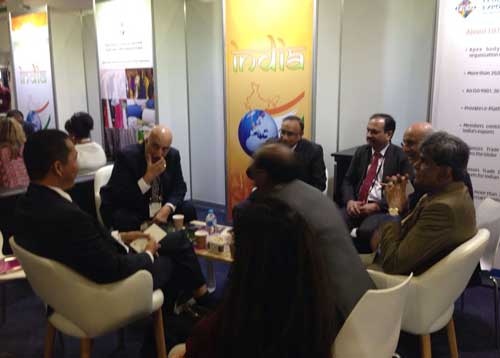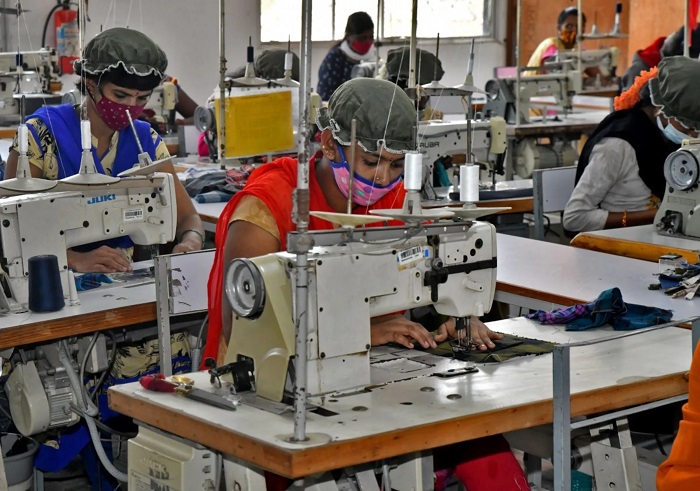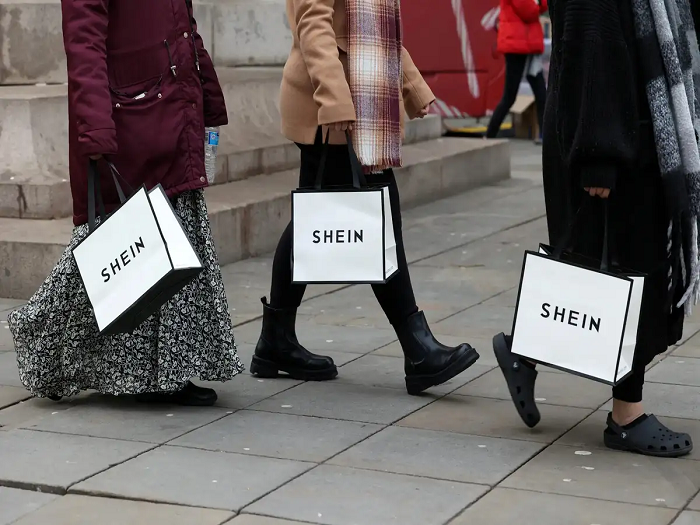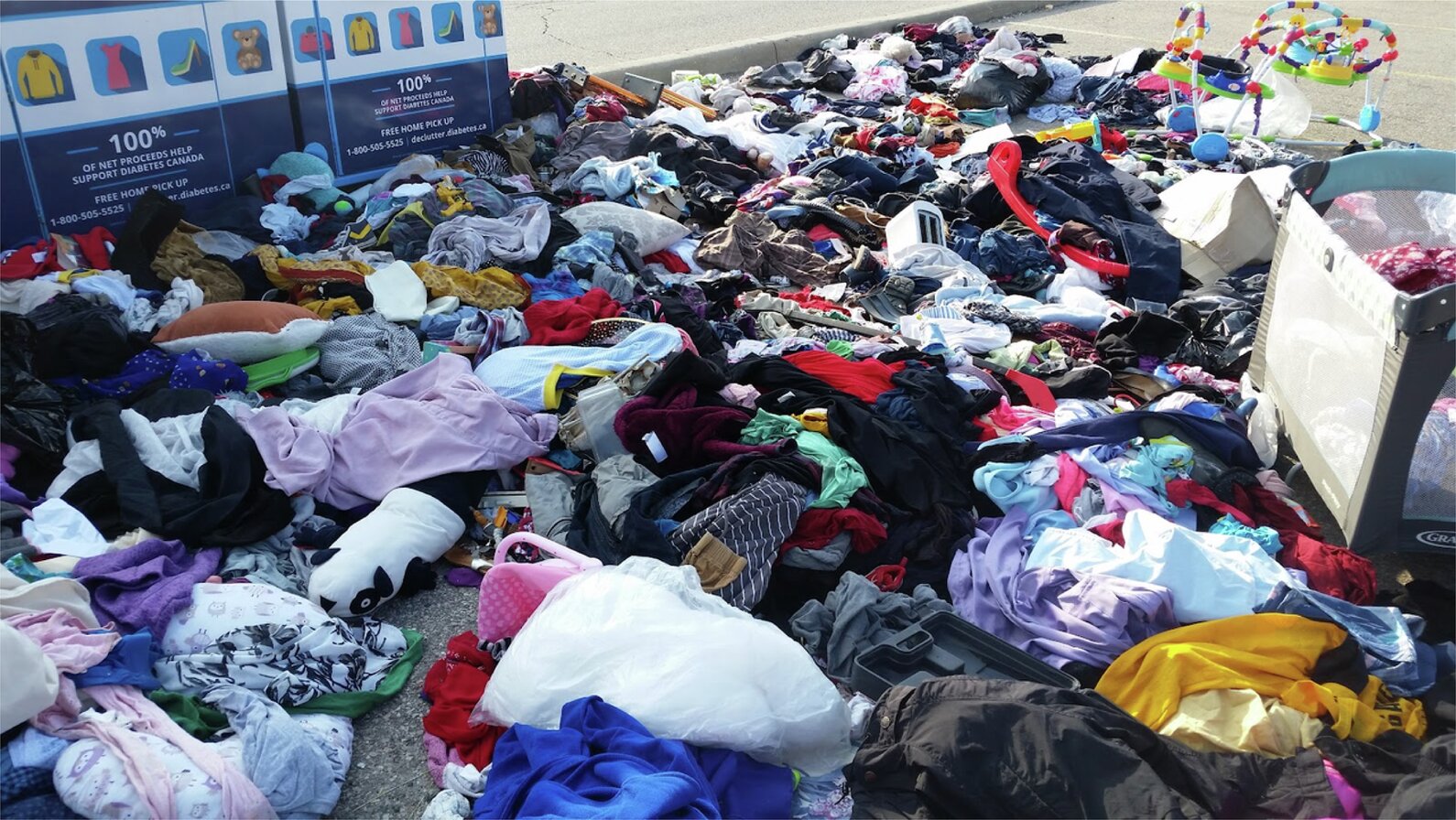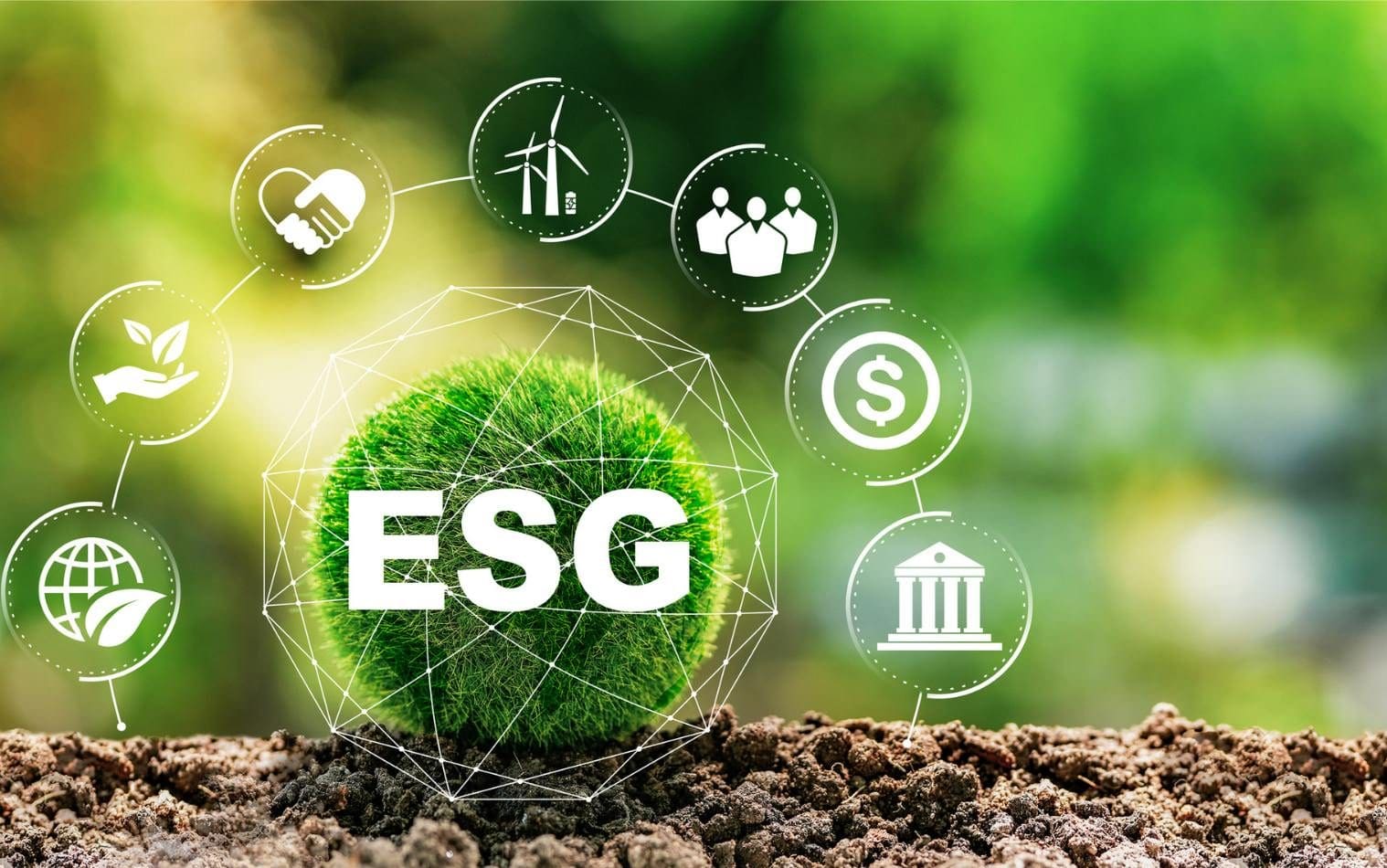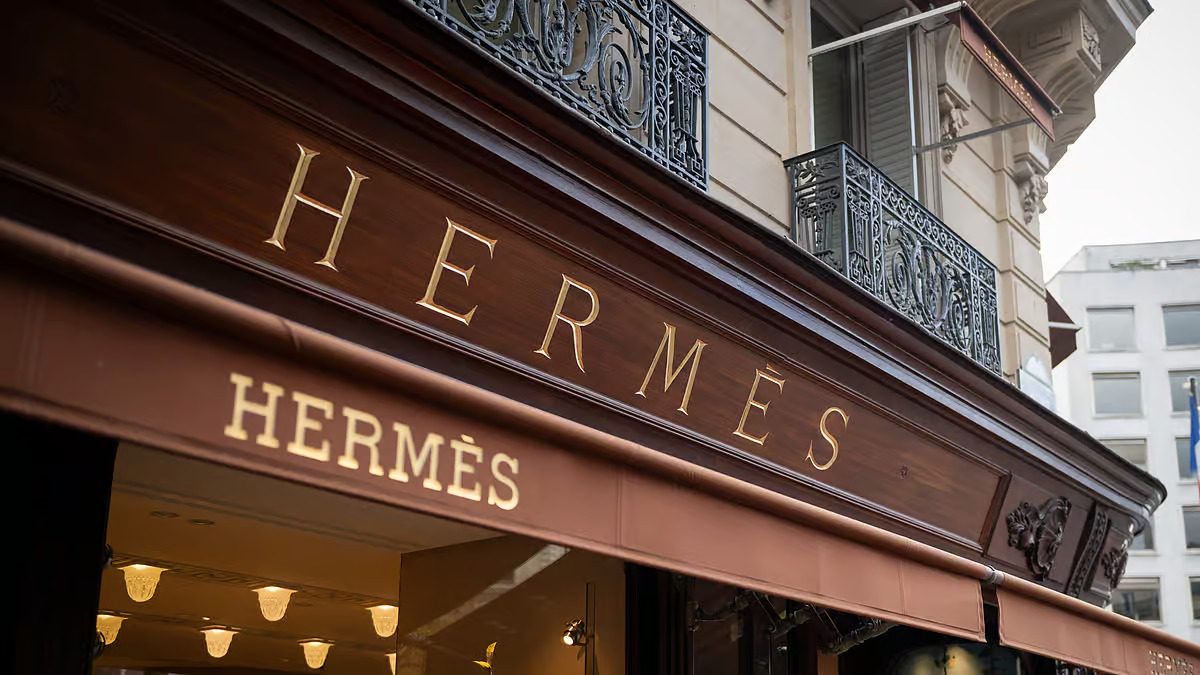FW
Ghana’s textile industry is in dire straits. The industry’s woes started in early 2000 when original designs made by Ghanaian textile companies were stolen and reproduced cheaply in China for the Ghana market. The industry which had so much potential was pushed to its knees as the high cost of production and the influx of cheaper and pirated textiles from China left it helpless. The textile industry which used to employ over 25,000 people has seen a decline in production since 2005, leading to massive lay-offs. The workforce in the industry has dropped by over 80 per cent since 1985.
Production of fabrics was 130 million meters in 1975, 46 million meters in 1995, 65 million meters in 2000 and 39 million meters in 2003. Today, production is below the 30 million meter mark. Workers are calling for the re-activation of textiles piracy task force set up in 2010 to deal with traders in counterfeit textiles.
While locally produced cotton is used by firms, many of the dyes, chemicals and machines are imported from abroad at significant prices. The market is flooded with counterfeit textiles. The borders are porous with only a few of them manned by security people, making it very easy for these counterfeiters to pass through.
The three-day India International Garment Fair will be held in New Delhi, January 17 to 19, 2018. The fair will showcase the entire range of women's wear, men's wear, children's wear and fashion accessories. Around 350 garment and accessories manufacturers will display their collections.
IIGF is one of the largest and most popular platforms in Asia where overseas garment buyers can source and forge business relationships with India's finest in the apparel and fashion accessories domains. It is the flagship event of the Apparel and Export Promotion Council (AEPC) and has been building bridges between global buyers and suppliers from India for the last three decades.
For this edition, AEPC has partnered virtual fashion trade show platform Fashionablyin to create a virtual buyers’ lounge. Fashionablyin aims to make buyer trips more efficient by engaging them with the right suppliers. The company will match buyers with suppliers by planning meetings in advance and facilitating discussions with suppliers.
The Fashionablyin Virtual Buyers Lounge will be a great place for buyers and suppliers to connect and build relationships in a friendly and casual environment. With the dynamics of the global garment and apparel industry changing considerably in the last couple of years, the industry is shifting to India, the world’s most diversified clothing exporter.
Make it British was held on November 2 and attracted over 200 designers, manufacturers, retailers and academics, who gathered together to join a debate on how to build a British brand.
The UK textile industry, which has been in persistent decline since the late 1970s, has finally seen a rebirth. Several textile mills have opened, including the first cotton spinning plant in the UK for decades. Several factors have contributed to this turnaround. The cost of producing overseas has risen, particularly since the Brexit referendum, and the way the exchange rate is going has helped new UK producers and brands. Suddenly it has become more affordable to manufacture goods in Britain.
There has been a 25 per cent rise in the export of British-made clothing since 2011 largely due to emerging markets such as China and the US wanting to buy more products made in the UK. Issues like sustainability and transparency were acknowledged as some of the key aspects of having a manufacturing plant based in the UK. For manufacturers having a factory in the UK means they are flexible and very agile. Also, it means they are less exposed to currency fluctuations.
The shared opinion was, however, that it is important not to forget about functionality and relevance of the product, which should come before the emphasis on Brand British.
India took part in the International Apparel and Textile Fair, November 1 to 3, 2017, Dubai. The delegation comprised leading Indian clothing and textile groups, who are into various products like men’s wear, kids’ wear, high fashion women’s wear, technical textiles etc.
India is positioning herself as a high fashion and quality garment exporter. There is a huge potential to promote Brand India in the UAE and other markets in the region. India is the UAE’s largest trading partner and its exports to the UAE during the year 2016 touched $32 billion. This was 22.7 per cent of India’s garment exports to the world. The UAE provides excellent opportunities for Indian companies to utilise Dubai’s location as a platform for increasing exports to other countries.
India and the UAE can work together in the textile segment to promote high quality and fashion clothing, which can be exported not only to the West Asia and West African region but also to other developed countries including the EU and the US. The Federation of Indian Export Organisation not only helps Indian exporters find markets across the globe but also helps overseas businessmen to do matchmaking and enter the Indian market.
Finland-based fashion chain Lindex has made a range of denim using only a bottle of water, which is about two liters of water. The conventional washing process for a pair of denim jeans requires 50 to 70 liters of water. Lindex developed its new ‘Even Better Denim’ with Jeanologia, a denim technology and solutions provider based in Spain. The new process uses air and laser technology.
Even Better Denim styles are available for women and children. Even Better Denim is made from eco-friendly materials, including recycled polyester and post- consumer recycled cotton. Each pair of jeans is dyed in clean indigo dye and uses more sustainable trims, including buttons, pocket bags and zippers.
In 2014, Lindix began focusing on sustainable denim. Over the last three years, Lindex’s progress has led to 100 per cent of its denim assortment being classified as Better Denim—meaning, the garments are made from more sustainable materials and washed with only eight to 12 liters of water. Lindex’s goal is to continue its work with Even Better Denim styles and to develop additional low- impact apparel in the future. The goal is to offer customers denim with the least environmental impact possible.
The USDA raised its estimate for US cotton crop to 300,000 bales. The crop size was increased based on USDA increasing the average US yield to 900 pounds per acre. All states in the Southeast averaged at least 900 pounds per acre and all states in the Midsouth averaged above 1000 pounds per acre.
US carryover was increased 300,000 bales, up to 6.1 million. Certainly a few more hands must be played, but the odds favor a somewhat smaller final crop size and bigger export number. Thus, a carryover closer to 5.5-5.6 million bales is likely on the horizon.
With futures between 67 and 72 cents mills will continue to flock to the US for cotton. US cooperatives and merchants are aggressively offering strong basis bids to potential mills and that has encouraged excellent sales. It is a far more economical trade for mills versus other cottons. Mills can take advantage of the basis offers, buy On-Call and fix prices at later date. Granted, mills have not been very astute at fixing the price the past two years, but possibly they will begin to finally pay attention this season.
USDA raised its estimate of world cotton demand 1.3 million bales over last month’s estimate, and is now up to 119.3 million bales, more than 5.0 million bales more than last year. Being redundant, demand moves markets and the demand for cotton will continue to grow. Driven by consumer preferences, and the rapid increase in polyester prices due to massive worldwide pollution issues that are still seemingly denied by the casual wear brands like Nike and Adidas, as well as some of the big box retail groups, cotton has become much more price competitive versus polyester and other plastic fibers.
In order to attract investment, the Bihar industries department and state apparel and textile sector in association with Apparel Export Promotion Council (AEPC) organised a meet at Ludhiana to showcase initiatives taken by the Bihar government.
The state’s principal secretary (industries) S Siddharth gave a detailed presentation on policy initiatives, infrastructure, ease of doing business and availability of land and skilled workers in Bihar. He pointed out they have launched an online single window clearance system for investors to submit their proposals from any part of the world. Approvals will be granted online, further around 2,000 acres of land is available with the state government for allotment to investors.
Leading exporter and AEPC's Harish Dua said they plan to visit Bihar soon to decide on investments in the state. Investment commissioner R S Srivastava stated there is large domestic market in Bihar with a population of over 11 crore. Also, the state provides electricity for more than 22 hours a day throughout the state.
Asics has become Bluesign’s first Japanese partner for responsible chemical management. The sportswear brand joins 500 companies worldwide that are using Bluesign framework to eliminate potentially harmful substances from manufacturing in the production of textiles.
Asics intends to use Bluesign assessment tools for chemical management throughout its supply chain. The brand will use Bluefinder, which acts as a database for suppliers showing chemicals that have received Bluesign approval after a series of risk tests. The company says it will also use Blueguide which supports brands in their selection of materials as it highlights Bluesign approved fabrics, accessories and trims.
Partnering Bluesign offers Asics the opportunity to shift focus from restricting hazardous chemicals to providing insight into positive chemicals that its suppliers can use. Asics has sustainability targets that include expanding its supply chain management scope to include Tier II suppliers by 2020, which the company says Bluesign will contribute to.
Year 2016 was a special one for the ASICS group. This was the year it kicked off its new five-year ASICS growth plan, embarking on an ambitious new set of sustainability targets towards 2020. Last fiscal, ASICS Europe launched a centralized review of energy procurement and updated its electricity contracts.
The Council for Textile and Fashion is one of the participants at ISEA Australia. It is clearly mandated to promote the growth of the textile and fashion industry in Australia and has been in service for over 65 years. This not for profit organisation draws members from across the fashion and textile industry/ supply chain ranging from micro to large business establishments from both Australia and globally. Its focus areas are strengthening supply chains, fostering design and innovation, promoting ethical practices, supporting emerging businesses and building an Australian export base.
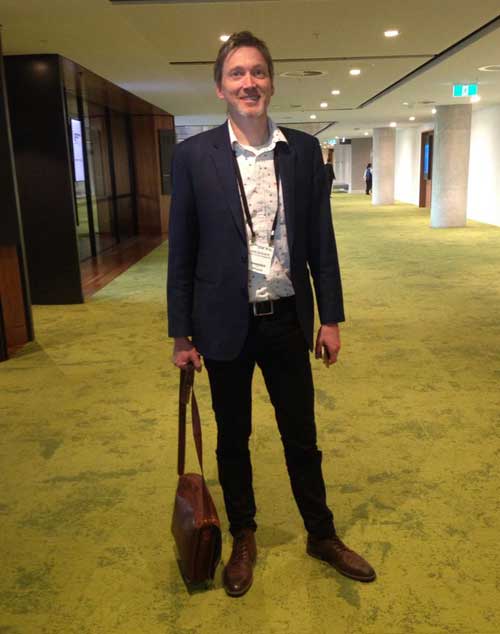
Fairs like ISEA provide immense opportunities for trade and support services. The Australian business environment is ingrained with lots of innovation across the supply chain and business enterprises are seriously focused on niche businesses.
It was not very long ago when the Australian textile and clothing sector had many mills and factories. That has changed. The new age business environment today is fostering immense lateral thinking to stay tall and lofty in this fiercely competitive business landscape.
Changing business dynamics is forcing this segment to relook the entire business proposition as wages per month in the Australian market have increased significantly through the years.
Australia’s spinning facilities are depleted. Well rounded skill sets are also conspicuously missing from the textile manufacturing stand point. Warp knitting has become antiquated. However there are groups like TFS that are thriving. TFS specialises in research and development for elastane-based fabrics.
India’s textile exports to Australia are growing by 12 per cent. With a FTA that can reach 20 per cent or thereabouts even though the Australian textile and clothing industry is growing only by one per cent or so.
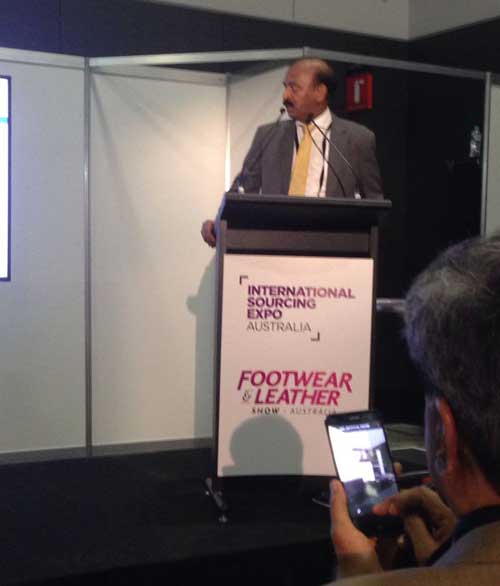
India has an advantage in that it has a complete supply chain unlike Bangladesh, Vietnam, or Cambodia.
Going forward there is a huge business opportunity for Indian economy and trade. By 2025 India and China are expected to be the largest business block globally, approximately 800 billion dollars, compared to the EU and the US, which is expected to be not more than 750 billion dollars.
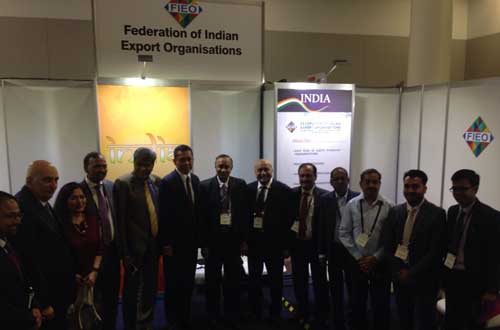
Fieo is leading the participation of over 80 companies in this edition of ISEA. The variety of products exhibited range from men’s wear, children’s wear, footwear, jewelry, fabric, textile etc. India's exports to this sector also constitute roughly 2.6 per cent of its exports to the world. Therefore, the potential to increase India's share in the lucrative Australian market in this sector is enormous.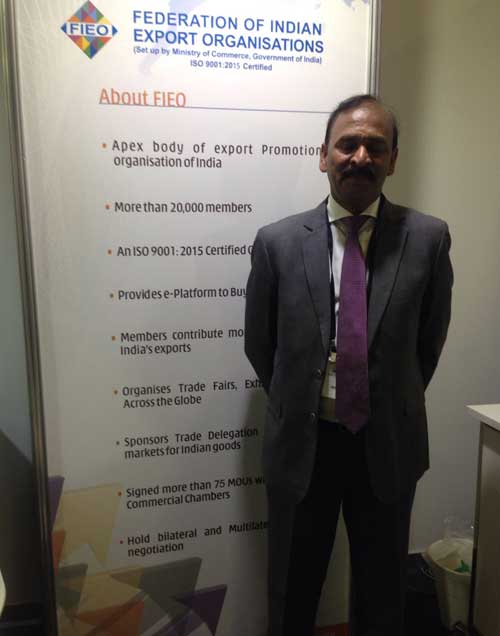
ISEA provides the right platform for exhibitors from India to present a strong business case. It will also be an opportunity to forge partnerships and invite others to participate in India's fast growing economic landscape. The objective of Indian participation here is to project the image of India as a fast emerging economy and its attractiveness as a destination for high end manufactured goods.
